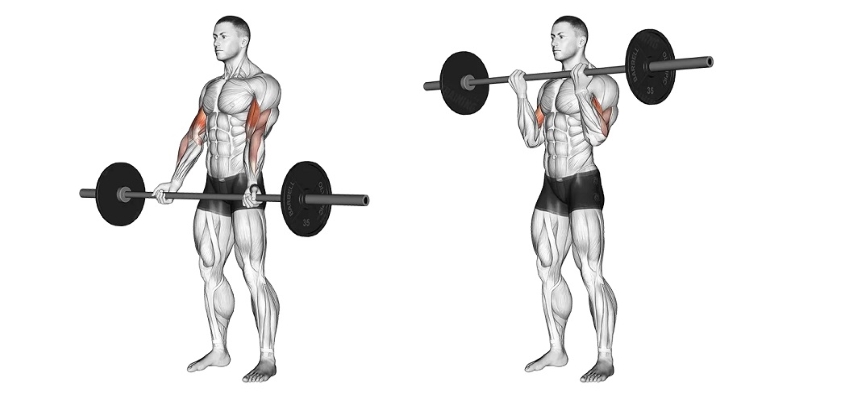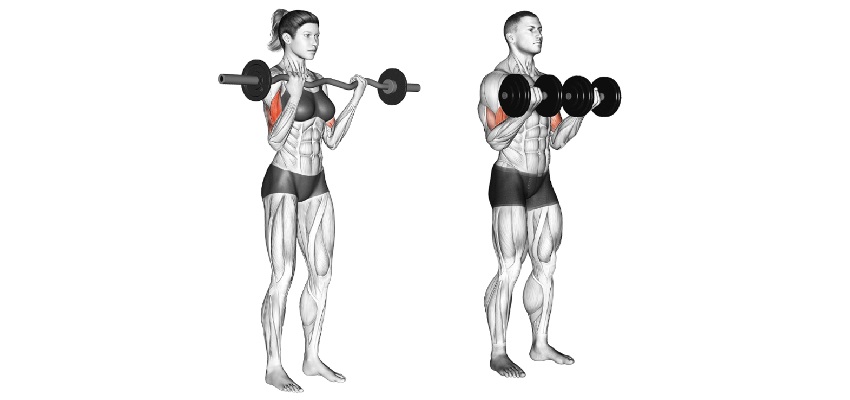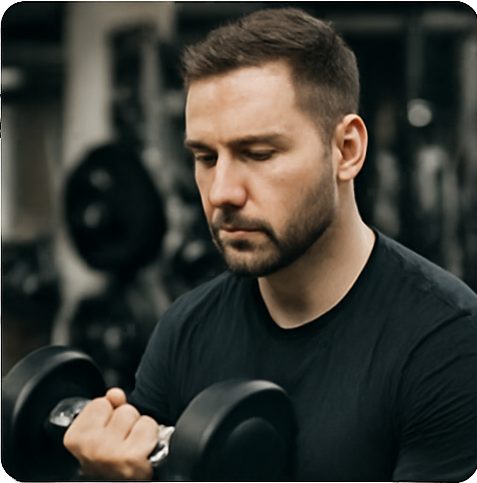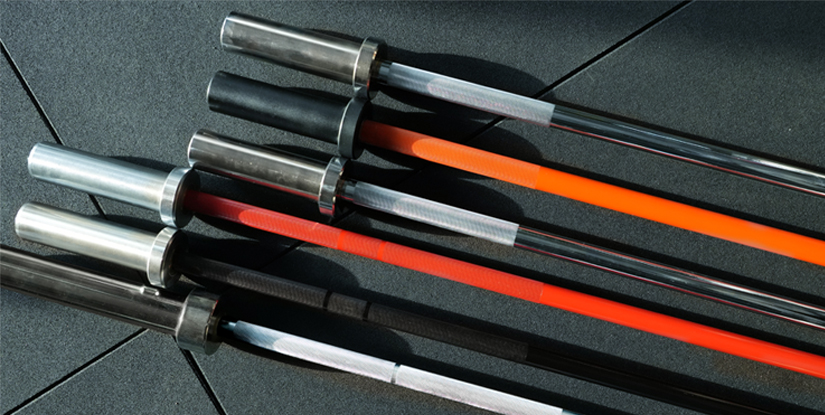The first time I hit a 30kg barbell curl, I felt pretty proud—like I was really making progress. Then I saw someone nearby curling 50kg like it was nothing. That moment didn’t knock me down, but it definitely gave me a little reality check.
I started wondering—was 30kg actually decent? Was I weak? Average? Wasting time? And honestly, I couldn’t find a straight answer that wasn’t buried in forum debates or lifters flexing online.
So I started digging. I checked the actual numbers, tested out dumbbell vs. barbell, straight bar vs. EZ bar, and paid attention to what worked (and what totally didn’t). I also realized a lot of lifters in commercial gyms like the one I train in are chasing the same answer: what does 30kg really mean for curls—and how do I go further from here without wasting effort?
That’s exactly what this guide is for. No fluff. Just what I wish someone told me when I started.
What’s a 30kg Barbell Curl, and Who’s It For?
- What Even Is a 30kg Barbell Curl?
A 30kg barbell curl means you’re curling a total of 30 kilograms with a barbell — usually using a straight bar or EZ bar, underhand grip, and standing position. Pretty straightforward, but there’s more to it than just the number.
It mainly targets your biceps brachii, but you’ll also feel it in your brachialis, forearms, and even a little through your shoulders and core (especially if you’re staying strict with your form).
It’s one of those lifts that gets thrown around a lot in the gym. I get it — it looks good, feels good, and makes you feel strong fast. But how hard is it really?

- Is 30kg a Big Lift?
That depends. In most commercial gyms, I’d call 30kg a solid intermediate-level curl. If you’re strict with your form, that weight is no joke.
If you’re cheating the rep — swinging your hips or turning it into a reverse clean — it doesn’t really count. But yo, if you’re strict with it—elbows locked in, no swing, and you’re controlling that bar both up and down? Respect.
It’s definitely not beginner territory, especially if you’re doing more than just a couple reps. At the same time, it’s not elite either. Think of it like a solid checkpoint — you’re clearly putting in work, but you’ve still got room to grow.
- Who’s It Suited For?
From what I’ve seen (and felt), curling 30kg is:
- A realistic goal for intermediate lifters who’ve been consistent for a while
- Tough for smaller-framed lifters or newer gym-goers — which is totally fine
- Definitely enough to build noticeable size and strength, as long as you’re not rushing it
I started hovering around 20–25kg when I was new, and 30kg felt like a mountain. But once I locked in my form and stayed patient, it stopped being scary and started feeling like part of the regular grind.
If you’re curling 30kg clean in a commercial gym with good form, you’re not behind — you’re actually right where you should be.
Barbell Curl Standards (kg)
When I finally hit a clean 30kg barbell curl, my first thought was: “Okay, but… is that actually good?” Turns out, there is a general idea of what’s considered decent at different levels — assuming you’re not swinging the weight like a kettlebell.
Here’s what I found out, based on strict form and typical commercial gym standards:
- Male Barbell Curl Standards (kg)
| Strength Level | Weight(kg) | Weight(lb) | Bodyweight Ratio |
|---|---|---|---|
| Beginner | 17 kg | 85 lb | 0.20x |
| Novice | 30 kg | 127 lb | 0.40x |
| Intermediate | 47 kg | 180 lb | 0.60x |
| Advanced | 68 kg | 243 lb | 0.85x |
| Elite | 91 kg | 312 lb | 1.15x |
- Female Barbell Curl Standards (kg)
| Strength Level | Weight(kg) | Weight(lb) | Bodyweight Ratio |
|---|---|---|---|
| Beginner | 6 kg | 43 lb | 0.10x |
| Novice | 14 kg | 68 lb | 0.20x |
| Intermediate | 25 kg | 101 lb | 0.40x |
| Advanced | 39 kg | 140 lb | 0.60x |
| Elite | 55 kg | 184 lb | 0.85x |
A few notes from the trenches:
- If you’re doing cheat curls (with a little body English), you can usually tack on ~5kg.
- But if you’re going strict tempo — slow on the way down, controlled up — subtract ~5kg. That tempo burns.
- Most people you see curling heavy at commercial gyms are somewhere between the two. Clean reps are rare, and clean reps with tempo? Even rarer.
So yeah, if you’re repping 30kg with decent form in a proper gym setup, you’re ahead of a lot of folks. Just make sure you’re not ego-lifting. The biceps can tell the difference — and so can your joints.
Straight Bar vs. EZ Bar: Which One’s Better?
I’ve gone back and forth on this more times than I can count. Both bars have their perks, and honestly, which one I grab depends on how my wrists feel that day.

Here’s the quick breakdown from my own experience training in a full commercial gym setup:
| Bar Type | What It Feels Like | Best For |
|---|---|---|
| Straight Bar | Tougher on wrists, but hits the biceps hard | Pure biceps isolation, ego lifts 💪 |
| EZ Bar | More natural grip — way easier on wrists and elbows | Long sessions, going heavier, less pain |
Some real talk:
- I hit 30kg way quicker on the EZ bar. Just felt smoother, especially early on.
- That said, when I’m chasing a nasty biceps pump and want to feel every inch of the rep? Straight bar wins.
- If you’re training in a commercial gym, you’ve probably got access to both. Honestly, rotate between them and see what hits best.
At the end of the day, neither bar is “better.” It’s more like, what’s better for you, right now.
Barbell Curl vs. Dumbbell Curl: Which One’s Harder?
I used to think curling 30kg on a barbell meant I could just grab 15kg dumbbells in each hand and do the same thing… yeah, not even close.

Barbells and dumbbells hit different. They both work the biceps, but the feel? Totally different.
Here’s how I’d break it down:
| Curl Type | Feel & Effort | What It’s Good For |
|---|---|---|
| Barbell Curl | You can move more weight since both arms work together | Building strength, progressive overload, power |
| Dumbbell Curl | Forces balance and stability; no hiding weak arms | Fixing imbalances, strict form, more isolation |
Some quick thoughts from training in a real gym:
- Dumbbells feel harder even with the same total weight. No momentum to save you.
- Barbell curls let me go heavier — but I’ve definitely cheated more on those.
- Dumbbells smoked my arms more when I slowed the tempo.
So yeah, curling 30kg on a barbell isn’t the same as 15kg dumbbells per side. If anything, dumbbells keep you honest. I rotate both in depending on the day — strength block or accessory work. Both have a place.
Getting the Most Out of Your Barbell Curls Without Spinning Your Wheels
How I Made Barbell Curls Actually Work
When I first started curling 30kg, I thought I was killing it. But my arms weren’t growing like I expected — turns out, a few tweaks made all the difference.
Here’s what helped:
- Keep your elbows still — don’t let them drift forward. I used to do that without noticing.
- Cut the momentum — if you’re swinging it up, your biceps aren’t doing the work.
- Brace your core — especially when curling heavy. Keeps your spine safe and your form tight.
- Breathe — I used to hold my breath on hard reps. Not helpful.
- Mind-muscle connection — yeah, it sounds kinda cheesy, but once I actually locked in and focused on squeezing my biceps, every rep hit way harder, no lie.
Why My Progress Stalled
I hit a wall with curls. No strength gains, no size. Looking back, here’s what messed me up:
- Too much weight, sloppy form — ego lifting is fun… until nothing grows.
- Wrong frequency — I was either doing curls every day or skipping them for weeks. Neither worked.
- Nutrition fail — I was training hard but barely eating enough to support growth.
- Zero patience — I thought 30kg would turn me into a beast in two weeks. Spoiler: it takes longer.
When I Knew It Was Time to Go Heavier
I stayed at 30kg for a while — until it started feeling kinda easy.
Here’s when I knew I could bump the weight:
- I was hitting 10–12 clean reps for 3–4 sets
- My form stayed sharp — no rocking, no leaning, no turning red trying to finish the last rep
- I felt like I could keep going after a set — that’s when I’d jump by 2.5kg to 5kg, max
Nothing fancy — just being consistent and honest with my reps made way more impact than adding plates too fast.
My Simple Curl Program Around 30kg
Once I could curl 30kg with decent form, I stopped just randomly throwing in curls and actually built a small weekly plan around it. Nothing crazy — just enough to keep getting stronger without burning out my arms.
Here’s what that looks like:
| Day | Exercise | Sets | Reps | Notes |
|---|---|---|---|---|
| Monday | EZ Bar Curls | 4 | 8–10 | Heavy-ish, clean reps, full ROM |
| Thursday | Straight Bar Curls | 3 | 10–12 | Lighter, slower tempo, strict form |
| Saturday (opt) | Dumbbell Preacher Curls | 3 | 12–15 | Just chasing the pump and balance |
It’s simple, but it works. Monday’s the heavy hitter, Thursday’s all about control, and Saturday is optional — just for extra volume or if my biceps still have juice left. I do all of this in a commercial gym setup, so I’ve got the right bars, benches, and dumbbells to play with. Makes a big difference when you’re pushing for clean curls at or above 30kg.
Hitting 30kg barbell curls with solid form is no small feat—it means your training’s paying off. Keep showing up, stick to a smart plan, and let those gains build over time. Progress might be steady, but it’s always moving forward when you stay consistent.
Related Articles
Barbell Curls: Tips, Mistakes, and Why They’re Worth It
Why Reverse Barbell Curl Biceps Workouts Hit So Hard
Barbell Preacher Curl vs Barbell Curl: What I Learned
Barbell Curl vs Dumbbell Curl: Difference for Biceps Growth
FAQs about 30kg Barbell Curl
The 30kg barbell curl is considered a good weight for individuals who have already developed some strength in their arms. For beginners, it might be too heavy, and using a lighter weight would allow for better control and muscle engagement. However, for intermediate lifters, a 30kg barbell curl is a suitable challenge to push progress. The key is ensuring proper form and control throughout the lift. Lifting too much weight too soon can lead to swinging, which reduces the effectiveness of the exercise and increases the risk of injury. Gradually increasing weight while maintaining perfect form is essential for long-term progress. If you’re able to curl 30kg with good form and consistent effort, it’s a sign you’re progressing in your strength training routine.
The ideal weight for barbell curls depends on several factors, including your experience, fitness level, and strength goals. Beginners typically start with 10kg to 20kg, allowing them to focus on mastering proper form. As you progress, you can increase the weight to challenge your muscles further. For intermediate lifters, a 30kg barbell curl can provide a sufficient challenge. Advanced lifters may use weights between 40kg and 50kg, depending on their strength and training goals. It’s important to choose a weight that allows you to perform the exercise with controlled movements and without compromising form. Progressive overload is a crucial factor in muscle growth, so gradually increasing the weight over time will help you achieve continuous improvement.
A 25kg barbell curl can be a good weight for individuals who have some experience with strength training but aren’t yet ready for heavier loads like 30kg or more. It’s an excellent weight for intermediate lifters working on building both strength and muscle endurance. If you’re lifting 25kg and can complete sets with good form, it indicates you’re progressing toward higher weights, like the 30kg barbell curl. However, if you can complete multiple sets with ease, it may be time to increase the load to ensure your muscles are challenged. Keep in mind that focusing on technique and muscle engagement is more important than just lifting heavier weights. Proper form ensures better muscle activation and minimizes injury risk.
A 24kg barbell curl is generally considered a moderate weight for intermediate lifters. It offers a good balance between strength and form, allowing you to focus on building muscle while avoiding unnecessary strain. For those just starting out, this weight might be a bit challenging but still manageable. For individuals with more experience, it’s a stepping stone to heavier weights like 30kg or 40kg. If you’re consistently able to curl 24kg with proper form and control, it suggests you’re on track to increase the weight gradually. However, if the curl feels easy after several sessions, consider increasing the weight slightly to continue progressing. Always focus on progressive overload and aim for incremental improvements in strength and muscle development.

Hi, I’m the editor here at Leadman Fitness. We’re a manufacturer focused on producing top-quality barbells, plates, kettlebells, dumbbells, and strength training gear. I’ve been into sports and fitness for years, and I know my way around all kinds of gym equipment—both from using it and helping create it.
I spend a lot of time understanding the real problems people run into in the gym—whether it’s beginners trying to pick the right gear or experienced lifters looking for something more durable. I stay in close touch with our production team and talk directly with other equipment makers, so we’re always improving based on what real lifters and coaches are looking for.
What I share comes from hands-on experience—stuff that actually helps people train better, not just in theory, but in real gyms.
